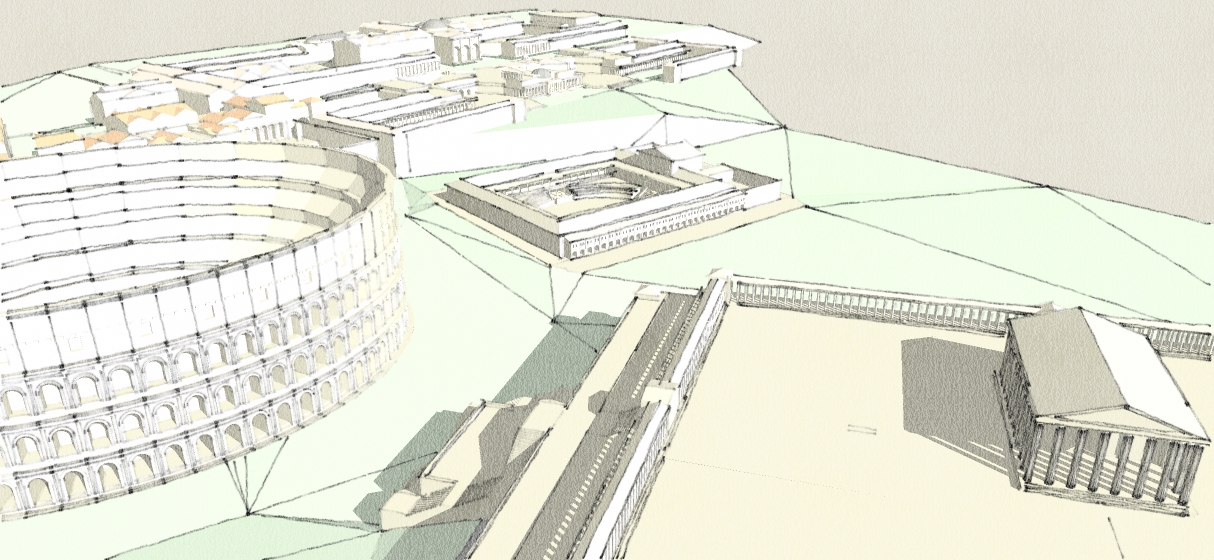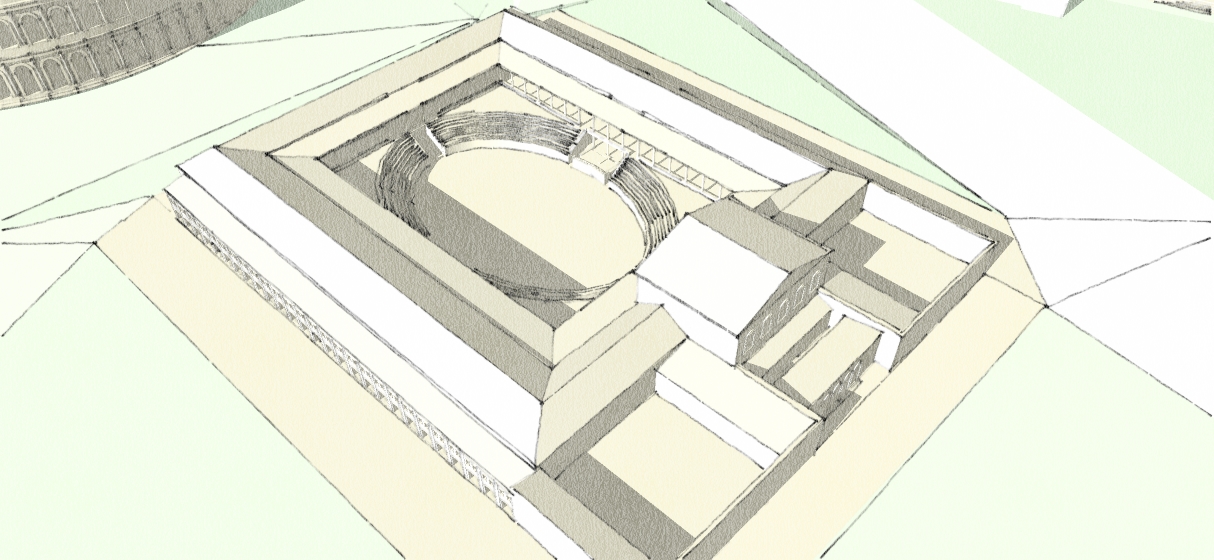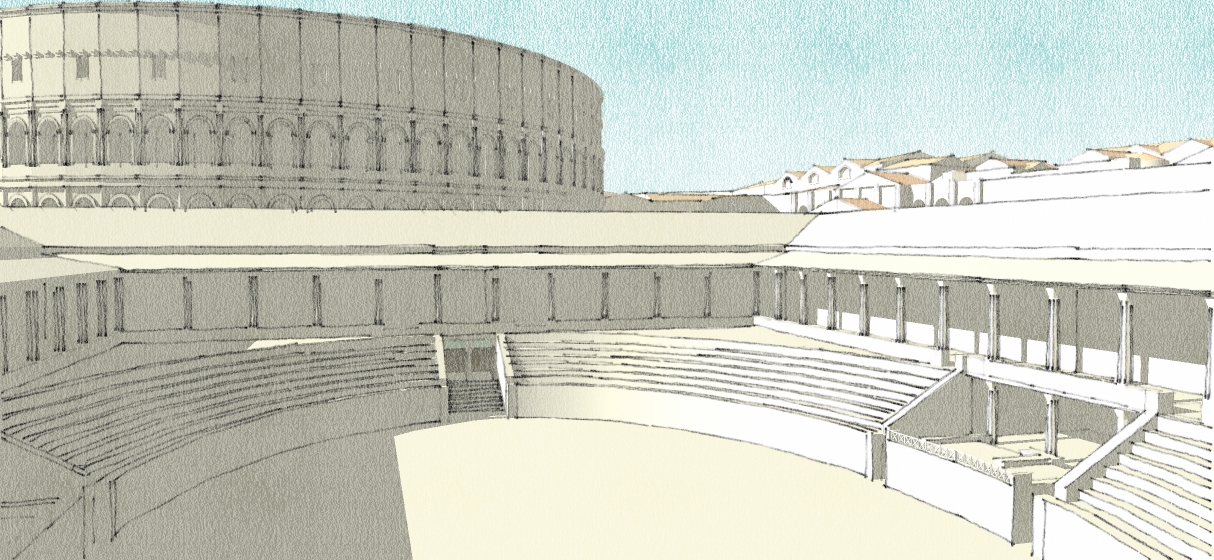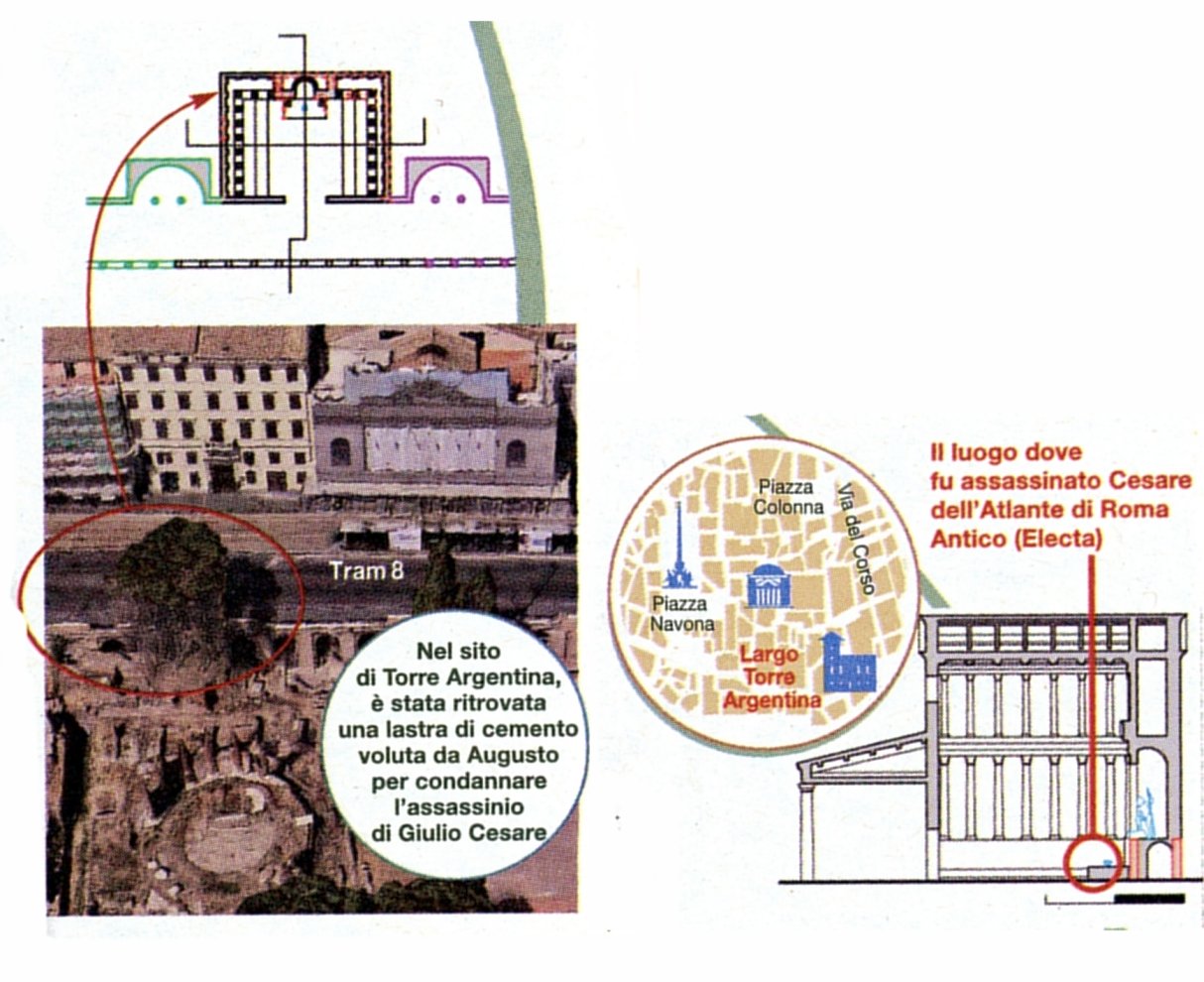Ludus Magnus



And here are three links. The first is an interview with a nice explanation about the temple on the Velia slope and the sacred wells. The second is my animation with my (bad) english comment. The third is a broader view on the Palatine slope excavation.
Sorry Fluffy, for the time being I have no info on the Domus Tiberiana issue.
As for the temple on the slope of the Velia, it was completely razed by Nero's atrium, which later became the base for the temple of Venus and Rome. What the excavations showed was just the sidewalk in front of the temple, with two sacred wells at each end. So we have a hint on how broad it was (not much, about 14 meters) how ancient (a lot, one of the wells could be dated at Vth bC, and it contained even older materials, VIIIth bC, that had been thrown in at the moment of the consecration. Both the sidewalks and the well's walls had been preserved and raised through the centuries, which means it was very revered and important. But there's no mention in the sources, and the rich materials found in the wells don't give any certain indication about who or what was the deity to which it was dedicated.
I'll post a video with a sound track as soon as I come back from Haiti. For the time being I give you the text that should go with the video. Any correction to my english will be welcome:
This is the year 64 AD. The temple at the top of the hill is dedicated to Fortuna Respiciens, the goddess of Fortune that turns her back. And bad times were indeed ahead for Rome.
The street that led from the Circus Maximus to the valley was narrow and twisting, with high buildings and shops on both sides.
At the end of the street a square opened up, with a conical fountain on one side, the Meta Sudans. At its left you could see the courtyard and the building of the Curiae Veteres, the ancient assembly hall. On the right, the temple of the slopes of the Velia hill. High up you could take a glimpse at Nero’s Domus transitoria, centered round the house of the Domitiis.
And then a huge fire broke out. It lasted several days, and destroyed a large part of the city.
Nero, after the fire, used the rubble to raise the level of the valley of about four meters, leaving a large rectangular area at the original level.
The new city built by Nero after the disaster was quite different from the one before the fire. Streets were broad and straight, buildings in stone and marble, and at its heart there was an enormous complex organized round a grand lake; the imperial complex of the Domus Aurea, the golden house.
The emperor built the aqueduct of the Acqua Claudia, that fed the fountains and water games of his leisure residence on the platform of the Claudianus. The water then went down waterfalls over the length of the eastern face and flowed on to the lake.
On the opposite side of the lake, on the Oppio hill, Nero ordered the construction of a luxurious palace, the only section of the golden house that partially survives.
Nero died in the year 68, before seeing the completion of his great project.
The flavians, that held after him the imperial throne, erased the lake, shortened for about 24 meters the front of the atrium so as to enlarge the square, recreated a conical fountain with the old name of Meta Sudans (or sweating milepost), and to the left of it they placed a small temple as a reminder of the ancient assembly hall that was no more. On the top of the Sacred Way, the Arch of Titus.
At the center of the valley, where the lake once was, the flavians placed the imposing amphitheater.
The Claudianus was radically modified. A monumental staircase gave it access from the valley, and at the center of the platform the temple to the deified Claudius was rebuilt.
Nero hadn’t lasted enough to complete his baths. They were finished by Titus, who gave them his name.
Besides the monumental entrance to the baths, shops and porticoes were built.
And now a couple of notions about the building techniques of the amphitheater.
The plan of the Coliseum is not an ellipse, difficult to trace. It’s a polycentric, the combination of four circles. The walls radiating from the four centers are consequently perpendicular to the outer wall.
The foundations are a huge concrete ring, more than 12 meters in depth. The radiating walls have all the same profile, they are standardized, and so are the elements of the front face.
Thanks to this simple, standardized project, the flavian amphitheater was built in about eight years.
At the beginning of the second century the emperor Trajan started the construction of his monumental baths, in part destroying and in part hiding Nero’s palace on the Oppio hill.
Twenty years later, more or less in 120, the emperor Adrian moved the colossus into the valley, they say with the help of 24 elephants, and raised the temple of Venus and Rome.
A century later, about 220, the emperor Eliogabalus ordered the construction of a temple to the Sun god, on top of the platform that we know nowadays as the Barberini wineyard.
Another century goes by, and about the year 315 the arch of Constantine was built, the last great construction in the valley, that gave it the appearance that we can still recognize.
As for my problem with drawing on a xy plane, Fluffy's suggestion doesn't quite solve the problem, I usually redraw in x ray mode a plan that lies at z = 0, and the point I try to draw on the plane gets sunk to the underlying drawing ... I would like to tell the program to freeze the z so the cursor stays put on the xy plane whatever is visible down there ...
It's a non new. Today a long paper appeared on the most important italian newspaper, "La repubblica", under a beautiful title: "Julius Caesar was killed at the tram stop". The supposed spot of the murder lies indeed under the final stop of the tram line 8.
The real news is that Prof. Carandini has published with the editor Electa an important atlas of ancient Rome. The first such work from Lanciani's atlas, of over a century ago. It's important news, but with little public appeal. So Carandini, and Electa (which belongs to Berlusconi), both experienced PR's, are drumming up attention with these supposed breakthroughs. And they are right to do so, if it serves to attract public attention ... but do not fall too much for it ...
This is the illustration on the newspaper

I have a presentation tomorrow, and for that I prepared this short (6 min.) film. It's a sinthesis of the work done up to now. http://youtu.be/1MUBIrDeZnw
I am leaving for Haiti next week, but I'll be back at mid november, and I promise that at that time I'll prepare a version in english (always with my croaky voice though).
I need some help for Sketchup (mostly from Csaba, I suppose). I often have to draw a floor plan, or something like that, on a fixed plane, let's say at z = 15. I am sure there must be a way to "freeze" the cursor so that it only moves in the xy plane, but so far I haven't found it ... and it drives me crazy ... 
Nice. Hill crest too sharp though, a retouch in photoshop to soften will do the trick.
Thanks for your comments on Rome. Trying to put toghether a short animation, will post it when done...
Midway along the road of San Gregorio, on the left, there's the present day entrance to the Palatine hill, and right inside this impressive set of water cisterns. They probably served also as a sort of monumental base for the temple of Fortuna Respiciens. The road was part of the triumphal way. Victorious generals enjoyed a triumphal parade along this road, with the population accaliming them. But there were also keepsakes of human frailty: a slave muttered in his ear "remember you are a mortal", and the parade passed by this temple, dedicated to a sister of the goddess Fortuna, or good luck; but this goddess is looking the other way (respiciens). Good luck is not necessarily always with you, if you are not careful (and respectful to your gods), she might look the other way next time.
Well, this is my idea of the temple...


Wonderful building, Pichuneke. I hope it is still standing, the photo looks old. But it's not too different from what I modeled, first floor in masonry, struts and up with wood. This is a first try at placing the houses at the sides of the road that leads to the meta Sudans fountain ...

Thanks, Pichuneke. Interesting buidings, but too low rise for me. I need to imagine what an urban building six or seven floors high like might have looked like. Tried moving it a bit ...

I've added some more buiding blocks. For the wooden building I took inspiration from some norwegian ones, and it shows. I'll have to try something else ...

The last images I posted belonged to my reconstruction of the road that connected the circus with the Coliseum valley, after the fire of 64 ad. I am trying to imagine what the same road looked like before the fire. It was narrower, and about 4 m. below the level after the fire (and nowadays). This is my firs try at what the houses might have looked like ...
C'mon, you are fishing for compliments! You are doing a wonderful job, very detailed. I work on simplified exteriors, much easier.
My objection is for the conic roofing in the gymnasium, I think a domelike roof would be more appropriate.
Suppose you already have these drawings, but if not it may help. Sheila Gibson was a fine lady and a great draftasman (draftswoman?).
Later on I'll get in contact to see if we can swap models, I have other things in my hands right now.

I like the idea of a joint project venture, and I like spaceships. But I had a different concept. A bit crazy. Well, it goes like this, star travel takes several years (I don't believe in warp speed) centuries maybe. Zero grav, apart some living areas with artificial grav, no air friction, so you won't need sreamlined shapes. And practically unlimited resources and computing capabilities. You redesign your spaceship with SU, and zillions of maintenance and repair robots and microbots go out and rebuild it. You got constrictions, the main living area, the nuclear plant far away from it, and a very long linear engine for propulsion. But then you can design and build whatever you want, a gothic cathedral with spires irradiating in 12 directions 360 degrees round, towers and flying bridges and buttresses, gargoyles etc. The whole thing can be extremely lightweight, no significant weight or stress on the structure (acceleration and deceleration will be only fractions of a G), but will appear solid and textured. I'll try something on those lines someday ...
Another set, that I'll probably use for the road that goes up to the arc of Constantine (Via Gregoriana) ...

Grazie per la colonna, Micione.
Yes, the comic image is Alix, but Chaillet is the artist and researcher on roman architecture.
This is a first try of the shops in front of the Coliseum. Probably the entrance to the side road to the right was monumentalized with an arch or something ...

To Pichuneke. Yup, "skyscrapers" are a problem. Nero established a height limit of 21 m. (seven floors) which means that before the fire you had even higher buildings. Usually bricks for the first two floors, and shaky wooden structures going up from there. That didn't happen in the central area, but it did in the shadier neighbourhoods, like the Suburra. I am fond of Gilles Chaillet's work, he usually did a good research, but he got some things wrong. In the plate I show he imagined nice gardens and gazebos on the top floor. That's a modern idea, when you have elevators. In roman times the wealthy lived on the first floor, and poorer and poorer people going up. The really miserable lived on the top floor, had to carry water and things up there through shaky stairs, and were practically condemned to death in case of fire.
